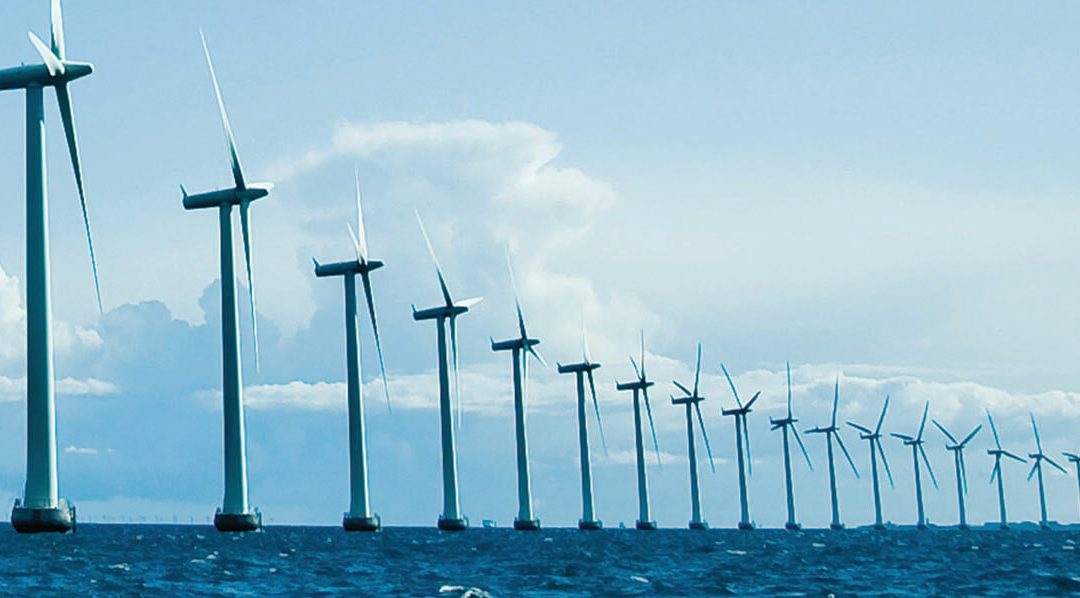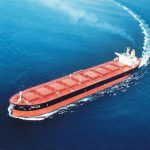INTRODUCTION
“Many of the basic principles that apply to all maritime asset classes will apply to the offshore wind sector.”
In our first article we highlighted some of the key contractual considerations facing shipowners looking to construct and charter offshore wind vessels. In this article we explore some of the considerations concerning the financing and bankability of offshore wind vessels. We have seen a diverse group of financiers interested in financing vessels in the offshore wind sector and, while the nature of the financing available will depend to a large extent on the employment of the vessel, there are various issues for them to consider.
COMMON CONSIDERATIONS FOR FINANCIERS
Naturally, many of the basic principles that apply to all maritime asset classes will apply to the offshore wind sector but, equally, given the specialist sector in which they operate, these factors should not be taken for granted:
• experience in sector: does the owner have a track record in the offshore wind sector? If they are a new participant, does the owner or its group members have the operational experience required? The turbine, foundation and undersea electrical cable installation and heavy lifting processes are very complex areas which require experienced personnel;
• appetite for risk: is this a speculative order predicated on known demand or is employment already in place with signed charters?;
• cash-flow: is there the cash-flow to support the debt? This would include a review by the financier of, among other things, the length of any charter term, the charter hire rate, the termination rights and the off-hire provisions;
• quality of team: given the shorter nature of employment contracts with regards to installation vessels, what is the quality of the management team to win projects and to capture future demand?; and
• asset quality: how does the vessel’s design and technology meet the requirements of the market now and in the future? Will the vessel have the flexibility to work in multiple jurisdictions and what is the likelihood of the asset being able to compete in the future with newer and likely larger vessels? In addition, how does the price of the vessel compare with similar assets types?
OFFSHORE WIND INSTALLATION VESSELS
In the offshore wind sector, there are two key types of vessels. Firstly, there are support vessels which generally have long-term charters in the region of ten years. Secondly, there are wind turbine installation vessels (“WTIVs”) whose charters are much shorter in duration, in the region of six to eighteen months, depending on the size of the offshore wind project.
For the remainder of this article, we will look at some of the structuring and bankability issues in respect of WTIVs as, given the typically shorter term nature of their employment, it is these installation vessels where we see there being potential for a greater variety of financing structures and where more thought may need to be applied to bankability issues.
DRIVE FOR NEWBUILDS
When the offshore wind market was developing, installation requirements were satisfied by heavy lift vessels deigned for the oil and gas industry. However, market requirements have shifted to larger capacity WTIVs and purpose-built wind foundation installation vessels capable of handling the largest monopile foundations. This requirement for specialised vessels and environmental pressures across the whole supply chain will lead to older vessels becoming obsolete at the installation phase and also drive demand for newbuild WTIVs.
Much has already been written about the potential bottleneck for WTIVs, with demand projected to outpace the supply of capable vessels by the late 2020s. While we have seen an increased number of new WTIV orders recently, based on current expectations the market will still require further newbuilds by approximately 2028.
Offshore wind provides an ESG friendly investment environment and the anticipated demand for WTIVs seems apparent. Although, a number of factors seem to be contributing to the anticipated undersupply, with one possible contributing factor being cost of a newbuild WTIV, which is in the region of US$300m to US$500m.
SHORT-TERM EMPLOYMENT
Our experience shows that any financings for an installation vessel will be more bespoke and will need to be tailored to take into account the employment of the vessel and the lack of long-term employment. As the sector evolves, while ideally shipowners and financiers would want to see long-term employment, we have not seen this so far and it raises the question as to how any financier can get comfortable with re-marketing risk on vessels unless the shipowner has a substantial balance sheet, a series of employment contracts with later delivery dates, or other support to mitigate that risk.
A contract for the installation of an offshore wind farm may range from six to eighteen months but multiple employment contracts can be put in place back-to-back so that there is up to approximatively three years’ employment for a vessel from delivery from the yard. However, even with the current high charter rates, this is unlikely to enable a full pay down of the loan at the end of this period. The track record and experience of the management team to be able to demonstrate that they are able to win future contracts will be particularly important here.
“Financiers might seek a lower level of debt to ease their debt service burden, but this will place greater pressure on the amount of equity that will need to be in place. ”
Financiers might seek a lower level of debt to ease their debt service burden, but this will place greater pressure on the amount of equity that will need to be in place. Given the short-term nature of the employment contracts, there are likely to be periods of assured profitability for these vessels in the early years following construction, so financings could be structured so as to capture that cash with appropriate and flexible payment profiles and cash sweeps. Financings of these assets would not be tied to inflexible long-term amortisation profiles.
QUALITY OF COUNTERPARTIES AND GLOBAL REACH
The quality of the charter counterparties and the charters in this initial post-construction phase will be particularly vital to financiers as they seek to ensure their expected returns are secured through these initial contracts. It will be important for financiers to establish the creditworthiness of the charterer and whether any guarantees will be in place in respect of the charter obligations.
Irrespective of the underlying nature of the charter, where an owner is intending to finance a vessel against the revenue from the charter, there will be various aspects of the charter terms that will be heavily scrutinised by financiers. Addressing all such bankability issues falls outside the scope of this article, but any elements of the charter that could affect an owner’s ability to service the debt – such as the length of the charter term, the daily rate of charter hire and the charterer’s rights to reduce hire or place the vessel off-hire or terminate the charter – will be carefully reviewed by the financiers.
Given the boom in offshore wind globally, owners should be able to take advantage of this worldwide demand and redeploy their vessels in other jurisdictions to take advantage of any varied employment options. However, installation vessel owners will have to demonstrate to financiers that they are able to navigate their way through evolving local content requirements, for example, in Japan, the United States and elsewhere. In respect of the United States, the Jones Act limits the ability of foreign built vessels from engaging in coastwise trade nationally. It is worth noting that there is a significant increase in price associated with building a Jones Act compliant vessel and this, coupled with the potential for foreign flagged WTIVs to engage in stationary installation work while being serviced by Jones Act compliant feeder vessels, may be impacting the number of Jones Act compliant WTIVs we have seen being ordered to date.
EXPORT CREDIT AGENCIES AND OTHER COLLATERAL SUPPORT
Export credit agencies (“ECAs”) will have a key part to play in the financing of WTIVs, especially given the high construction costs. Shipowners and shipyards will be very keen to build the vessels with ECA support. We believe that this will involve both yard-linked ECAs in Asia and the European ECAs who provide key technical equipment required for vessels globally.
The ECAs are likely to conduct due diligence at the outset of a financing on the security, charters and cash-flows. Given their special status, ECAs who provide direct financing, while ranking alongside other senior lenders in payment and security, will demand special voting and consent rights in respect of certain matters, particularly those governed by their policies. In addition, where ECAs provide guarantees in respect of a loan, they will require the underlying commercial lenders to obtain their consent to a proposed course of action.
When ECA support is not available, financiers will likely look for corporate or other collateral support from parent companies with a significant balance sheet. This might lead the market to be driven by the bigger players. However, there are still likely to be mavericks and speculators in the installation sector – just as there have been in drilling and various other offshore sectors over the years.
“Technology developments in installation methods will be key to financiers’ considerations and their bankability analysis.”
TECHNOLOGY RISKS
Like with any newbuild financing, there will be an element of technology risk. Some vessels are already being planned with alternative fuels and we note that Van Oord has recently ordered a new offshore installation vessel which can operate on methanol. As these vessels form part of the renewable energy chain, there will be a focus by developers on a vessel’s carbon footprint. As with the rest of the maritime industry, vessel owners will need to determine what fuel system to use moving forward and be able to demonstrate to their financiers and the charterers that this is a viable solution.
In addition to choice of fuels, technology developments in installation methods will be key to financiers’ considerations and their bankability analysis. The continued development of the floating wind market is another key consideration, as vessel contractors will likely want to understand how the advent of floating wind farms (which do not need jackups for installation) could impact future demand for WTIVs.
CONCLUSIONS
We have sought to highlight a few of the financing and bankability considerations for financiers in respect of WTIVs but clearly the above is not an exhaustive list of considerations. Each financing will likely be different and have its own considerations depending on the specific fact pattern. As the market develops we will see more trends developing and we will seek to update this article in due course once those trends become apparent.
Source: Hellenic Shipping News





